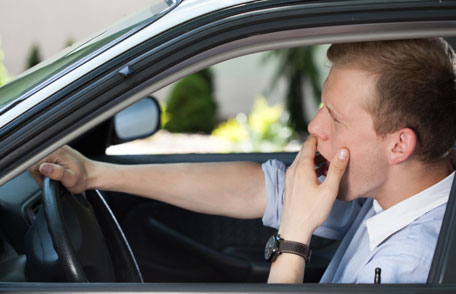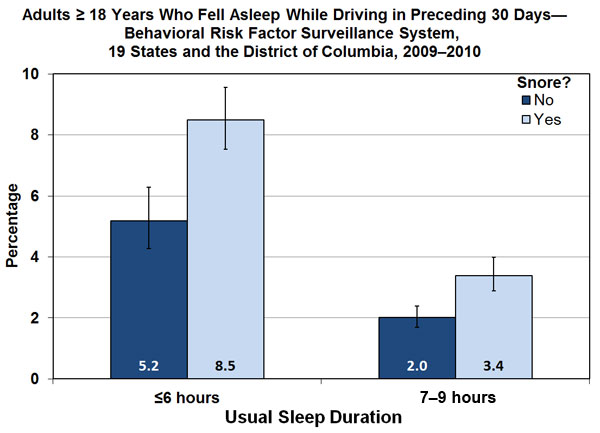Drowsy Driving: Asleep at the Wheel
CDC.gov – Drowsy Driving
 Drive alert and stay unhurt. Learn the risks of drowsy driving and how to protect yourself.
Drive alert and stay unhurt. Learn the risks of drowsy driving and how to protect yourself.
In an effort to reduce the number of sleep-related crashes and save lives, November 1-8, 2015 has been named Drowsy Driving Prevention Week by the National Sleep Foundation.
The Drowsy Driving Problem
Drowsy driving is a major problem in the United States. The risk, danger, and often tragic results of drowsy driving are alarming. Drowsy driving is the dangerous combination of driving and sleepiness or fatigue. This usually happens when a driver has not slept enough, but it can also happen due to untreated sleep disorders, medications, drinking alcohol, or shift work.
No one knows the exact moment when sleep comes over their body. Falling asleep at the wheel is clearly dangerous, but being sleepy affects your ability to drive safely even if you don’t fall asleep. Drowsiness—
- Makes drivers less able to pay attention to the road.
- Slows reaction time if you have to brake or steer suddenly.
- Affects a driver’s ability to make good decisions.
Did You Know?
- An estimated 1 in 25 adult drivers (aged 18 years or older) report having fallen asleep while driving in the previous 30 days.
- The National Highway Traffic Safety Administration estimates that drowsy driving was responsible for 72,000 crashes, 44,000 injuries, and 800 deaths in 2013. However, these numbers are underestimated and up to 6,000 fatal crashes each year may be caused by drowsy drivers.
Who’s more likely to drive drowsy?
- Drivers who do not get enough sleep.
- Commercial drivers who operate vehicles such as tow trucks, tractor trailers, and buses.
- Shift workers (work the night shift or long shifts).
- Drivers with untreated sleep disorders such as one where breathing repeatedly stops and starts (sleep apnea).
- Drivers who use medications that make them sleepy.
Learn the warning signs of drowsy driving—
- Yawning or blinking frequently.
- Difficulty remembering the past few miles driven.
- Missing your exit.
- Drifting from your lane.
- Hitting a rumble strip on the side of the road.
How often do Americans fall asleep while driving?
- Among nearly 150,000 adults aged at least 18 years or older in 19 states and the District of Columbia, 4%reported that they had fallen asleep while driving at least once in the previous 30 days.
- Individuals who snored or usually slept 6 or fewer hours per day were more likely to report falling asleep while driving.
 Prevent drowsy driving, before taking the wheel
Prevent drowsy driving, before taking the wheel
There are a few things you should do before taking the wheel to prevent driving while drowsy.
- Get enough sleep! Most adults need at least 7 hours of sleep a day, while teens need at least 8 hours.
- Develop good sleeping habits such as sticking to a sleep schedule.
- If you have a sleep disorder or have symptoms of a sleep disorder such as snoring or feeling sleepy during the day, talk to your physician about treatment options.
- Avoid drinking alcohol or taking medications that make you sleepy. Be sure to check the label on any medications or talk to your pharmacist.




